#rushnyk
Text
thought i’d share another thing i made here :’)
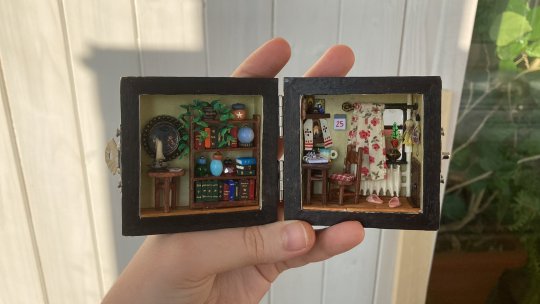


i started working on this thing back in january, as russian troops were gathering around our borders, and i got around to finishing it a couple months later, after they retreated from kyiv and my lucky family and i were able to get back home.
for half of the process i was asking myself, “is making this even worth it if it’s going to be bombed to ashes in a couple of weeks?” (the answer was yes); for the other half, i was asking myself how and why do you even make a house now that there are dead and gutted houses all around (the answer was “well, what else is there to do anyway”).
was aiming for the “small ukrainian granny’s apartment” vibe with soviet era “ugly 70s brown” color furniture and a bit of a witchy/magical realism touch :’) details + a bit of ukrainian folk trivia below!
featuring:
a little pot with a star in it, because stealing stars from the sky and storing them in pots for their evil little purposes is a classic ukrainian witch thing;
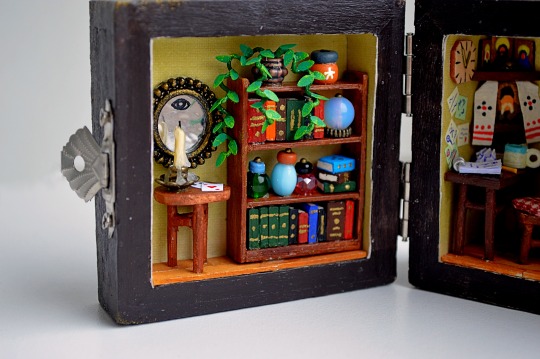
eastern orthodox icons, because every respectable ukrainian granny has those in her house + massive church-sanctioned witch hunts were never really a thing in ukraine and a witch is likely to have as amiable a relationship with god and saints and angels as with chorts (demons);
portrait of taras shevchenko, adorned with a rushnyk, because, again, can not be a proper granny apartment without those;

a blooming fern, because fern bloom is a Thing in ukrainian folklore (leads you to a hidden treasure, protects you from evil magic, brings you good luck, all that stuff);
a calendar booklet. it has recipes, farming + (dubious) medical advice, lame granny jokes, and shows February 25, because we’re still stuck in February 24 and hoping for the next day to arrive;
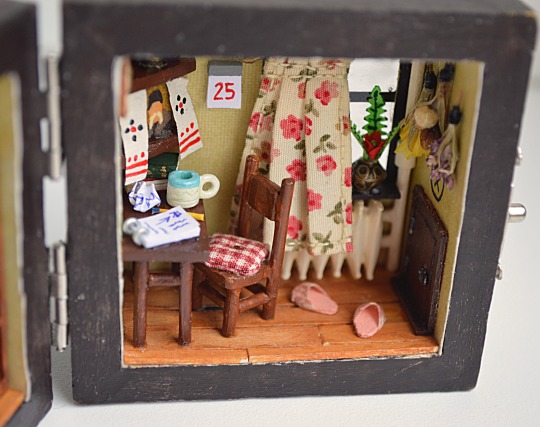
a mysterious tiny door. that rune means “heritage,” and i thought that a witch’s inheritance would warrant a little spooky door to keep it safe (also, our heritage is precisely what russia is trying to take away from us right now, so the concept has a special meaning to me);
fashionable pink slippers!
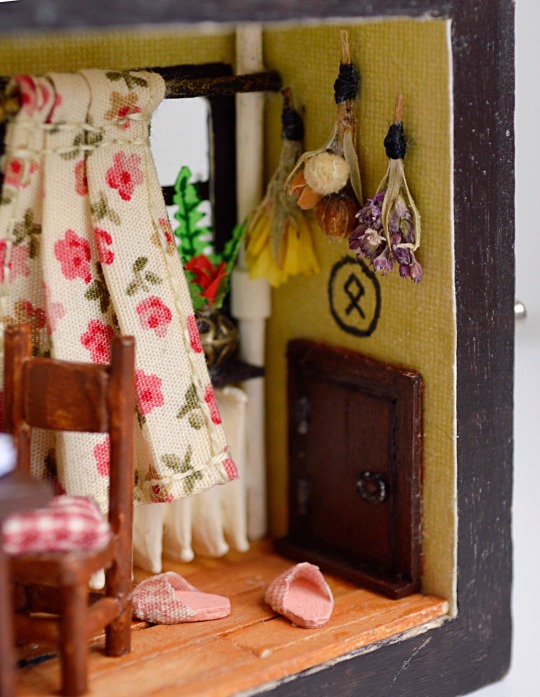
bonus: a CREATURE


#mari makes#miniature#diorama#ukraine#witch#ukrainian folk#ukrainian art#taras shevchenko#rushnyk#lots of tags bc i want attention
20K notes
·
View notes
Photo

Ukrainian rushnyk by Lidia Bohynych, 1974
779 notes
·
View notes
Text



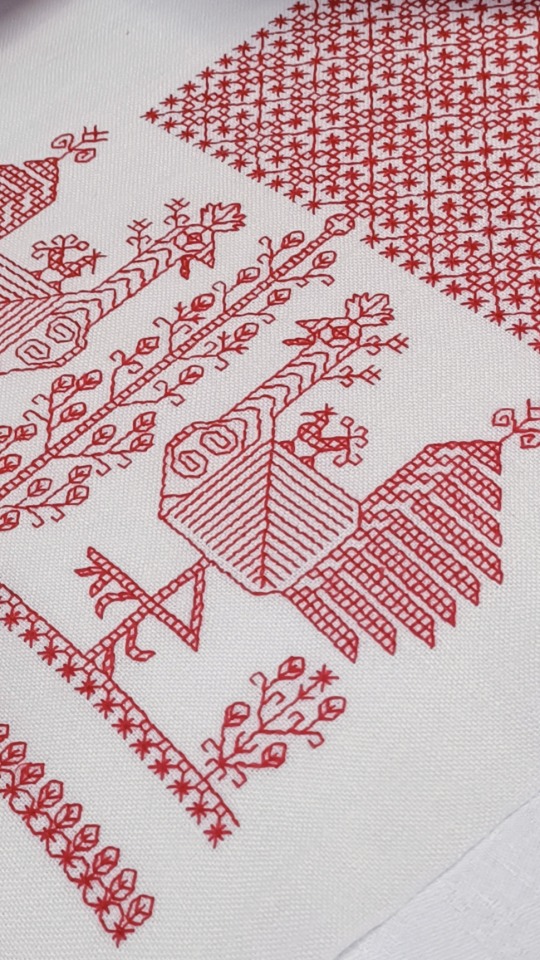
The Orthodox Church of Kajaani had a käspaikka display, and I just had to go. I've been looking at käspaikka pictures online for quite a while now, I love the symbolism and the motifs and the general aesthetic, but I'd never seen one in person.
The word "käspaikka" is Karelian and the literal translation is "hand cloth".
#рушник#käspaikka#rushnyk#embroidery#kajaani#orthodox christianity#although as far as i know käspaikka isn't strictly christian?#but i'm guessing the ones with pagan symbolism wouldn't be at this display
123 notes
·
View notes
Text

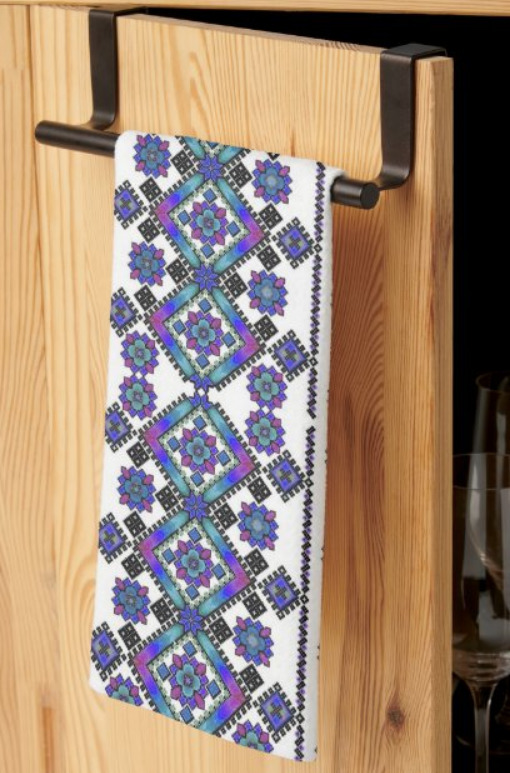
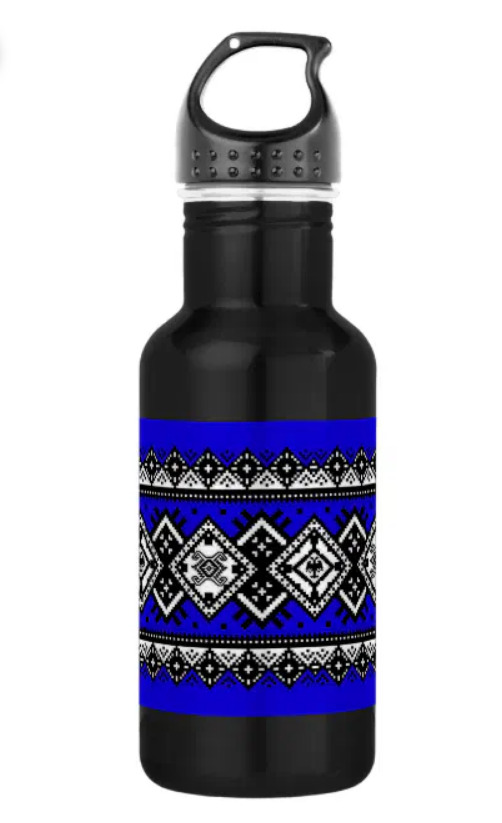

Slavic Embroidery products on Zazzle. Internationally shipped. 1 2 3 4
7 notes
·
View notes
Link
How does this make you feel? Share with us!
#graphicdesign#vintage#lada#boho#1960s#mandala#ukrainian#holly#goddess#tribal#rushnik#rustic#bereginya#traditional#geometric#abstract#sacred#rushnyk#bogoroditsa#garmony#pagan
0 notes
Text
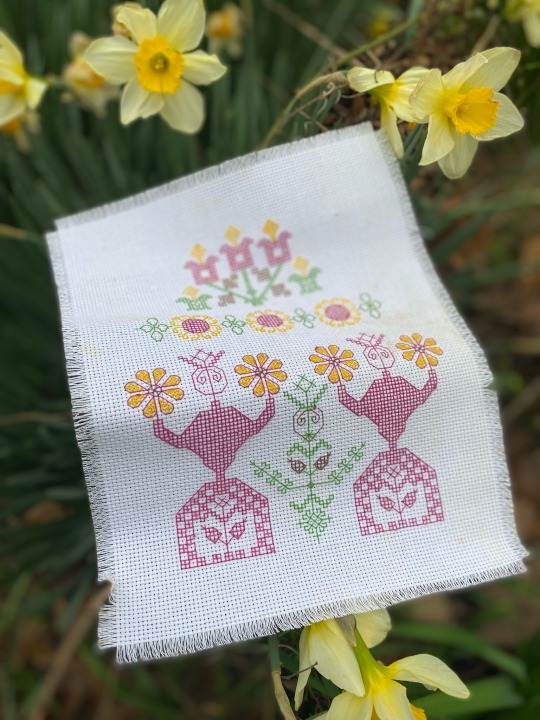

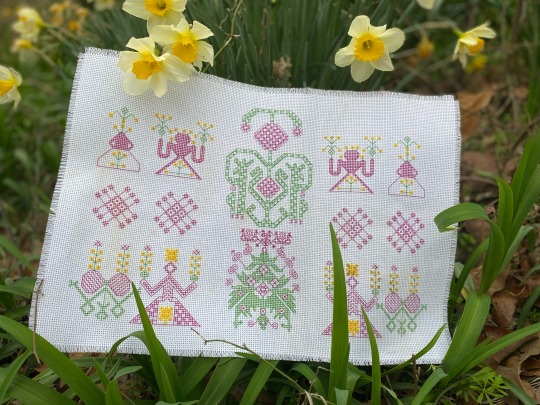


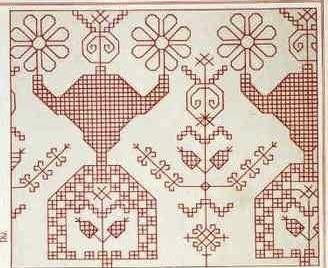
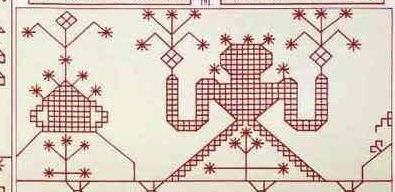
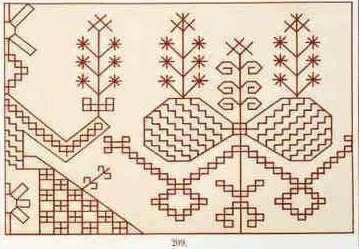

My favorite Spring goddess embroideries. Traditional patterns done in my own color choices.
#folk embroidery#goddess embroidery#Slavic#Russian#Rushnyk inspired#Spring#Goddess#Tree of Life#Rhombus#sown field motif#sun symbols
24 notes
·
View notes
Text

"Visitors from other planet", an embroided cloth (rushnyk), Studena village, Vinnytsia region, Ukraine, beginning of XX century
341 notes
·
View notes
Note
Hi, feel free not to answer this but I was going through your asoiaf fashion posts (stalker behaviour ik) and was wondering if you have any ideas on what kind of embroidery style the north would do? The stark sisters do it as a pastime and it's not like people are gonna have much else to do with the 80ft snowdrifts boxing them inside for years at a time.
Once again feel free not to answer this, I'm sure school must be stressful <3
So I take a lot of inspo for the north from eastern Eurasia, so I decided to go with Slavic/Russian embroidery for this one, particularly Rushniks





So according to the Rushnyk Wikipedia article: “The rectangular shape of the fabric indicates a life's journey and the ornamentation captures the cultural ancestral memory of the region…The needle has its own energy, an idea similar to acupuncture, and the color of the thread has sacred meaning. Red represents life and is the main color used. A rushnyk is given to a baby at birth, it follows the person throughout life and is used in the funeral service after death.”
Love how this is pretty much in line with a lot of Northern beliefs, practices, and superstitions. Young children are given them at birth for their protection, and maybe they are added to as they grow to symbolize their life so far and what they’ve done. Girls are taught how to make them not only for weddings but for funerals and births and as general protective talismans to wear and to have around the home
#asoiaf#what do I even call this#culture headcannoning?#culture posting?#based and anthropology pilled
74 notes
·
View notes
Text
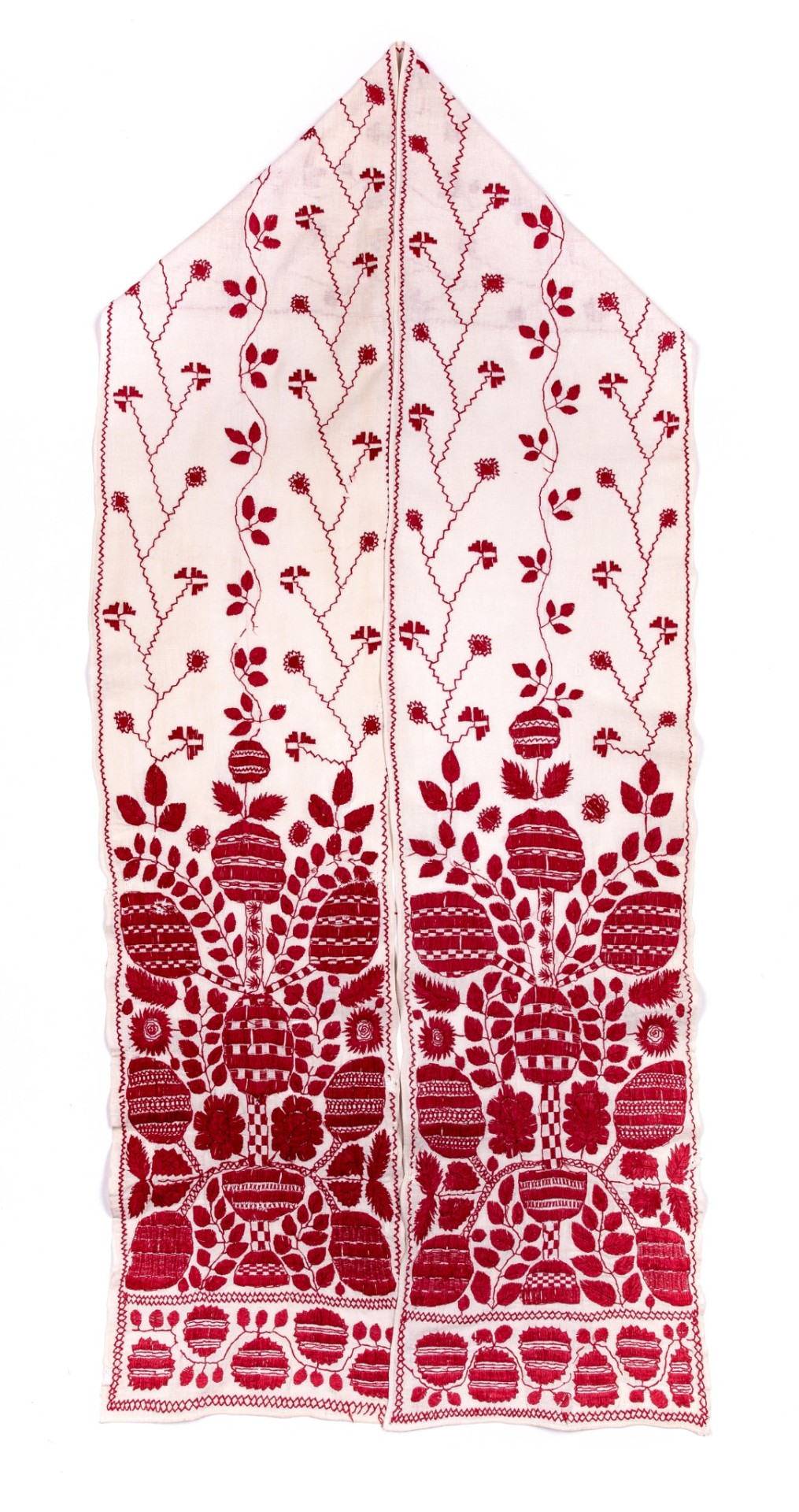

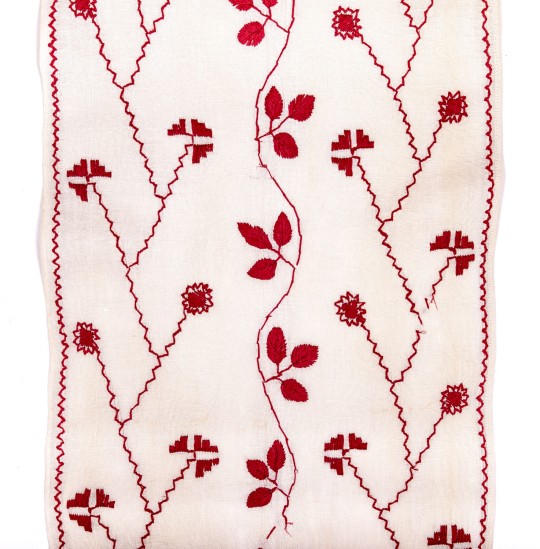
Ukrainian rushnyk (decorative/ritual cloth) featuring traditional embroidery styles and techniques. Upper Dnieper Ukraine, late 19th century.
Collection of Ivan Honchar Museum in Kyiv.
374 notes
·
View notes
Text
youtube
Here is famous jewish-russian poet Iosyf Brodsky reading poem dedicated to Ukrainian proclaimation of independence (translated by Artem Serebrennikov, but without his commentary).
Brodsky is considered one of the geniuses of modern russian poetry. He has a number of awards (including the Nobel Prize), and he had to flee from the Soviet Union due to the fear of state presecution. So, you know, a classic russian liberal.
Dear Charles XII, the Poltava battle*
Has been fortunately lost. To quote Lenin’s burring rattle,
“Time will show you Kuzka’s mother”*, ruins along the waste,
Bones of post-mortem bliss with a Ukrainian aftertaste.
It’s not the green flag, eaten by the isotope*,
It’s the yellow-and-blue flying over Konotop*,
Made out of canvas – must be a gift from Toronto* –
Alas, it bears no cross, but the Khokhly* don’t want to.
Oh, rushnyks* and roubles*, sunflowers in summer season!
We Katsapy* have no right to charge them with treason.
With icons and vodka, for seventy years we’ve bungled,
In our Ryazan we’ve lived like Tarzan in the jungle.
We’ll tell them, filling the pause with a loud “your mom”:
Away with you, Khokhly, and may your journey be calm!
Wear your zhupans*, or uniforms, which is even better,
Go to all four points of the compass and all the four letters.
It’s over now. Now hurry back to your huts
To be gang-banged by Krauts and Polacks right in your guts.
It’s been fun hanging together from the same gallows loop,
But when you’re alone, you can eat all that sweet beetroot soup.
Good riddance, Khokhly, it’s over for better or worse,
I’ll go spit in the Dnieper, perhaps it’ll flow in reverse,
Like a proud bullet train looking at us askance,
Stuffed with leathery seats and ages-old grievance.
Don’t speak ill of us. Your bread and wheat we don’t need,
Nor your sky, may we all choke on sunflower seed.
No need for bad blood or gestures of fury ham-fisted,
Seems that our love is up, if it at all existed.
Why should we plow our broken roots with our verbs?
You were born out of earth, its podzolic soils and its herbs.
Quit flexing your rights and laying all the blame on us,
It is your bloody soil that has become your onus.
Oh, gardens and grasslands and steppes, varenyks filled with honey!
We’ve had greater losses before, lost more people than money.
We’ll get by somehow. And if you want teary eyes –
Wait ‘til next time, guys, this provision no longer applies.
God rest ye merry Cossacks, hetmans*, and gulag guards!
But mark: when it’s your turn to be dragged to graveyards,
You’ll whisper and wheeze, your deathbed mattress a-pushing,
Not Shevchenko’s* bullshit but poetry lines from Pushkin*.
For decades the conossieurs of russian culture has defended Brodsky and denied his authorship of the poem, until this video popped up in 2015. Oh but not russians tho, they don't deny it. They're proud of it! This particular translation I've found on an english website dedicated to popularisation of russian culture :) And of course it had a xenophobic comment expressing support of Brodsky and hatered towards ukrarinians ^)
So yeah, I think we have more than enough reasons to say that any person who claims that russian invasion of Ukraine came out of nowhere and/or that it was not motivated by xenophobia and imerialism towards ukrainians, is full of bullshit.
[context/references explained under the cut, buckle up for a long lecture]
Poltava battle was one of decisive clashes between Sweden and Russia during the Great Northern War. Initially Ukraine was fighting this war on the side of the russian empire as its vassal, but before the Poltava battle we switched sides. There were several reasons for this choice, among the most important - russian emperor breaking the treaty between the Hetmanate and Muscowy. Important context - the head of then ukrainian state, Ivan Mazepa, was very close to russian emperor - you could say, he was his father figure. Mazepa educated tzar Peter in European manner and helped him start the europeisation of the Muscowy. russians see this battle as a huge personal betrayal (the fact that Peter I betrated Mazepa first is always omitted, in russian culture, unlike ukrainian, the person higher than you on hierarchy doesn't owe you shit but has absoulte power over you). That was 300 years ago and russians are still salty about it. and Mazepa is probably the second most hated ukrainian historical figure after Bandera.
"Show you Kuzka's mother" - a phrase meaning "show them hell", famously used by the ussr general secretary Michael Khrushchev adressed to american politicians in 1959.
"Eaten by isotope" - reference to the Chornobyl nuclear disaster.
Konotop - a small city in Northern Ukraine, famous for the Konotop battle that happened between cossacks and muscowytes in 1659. In the modern russo-ukrainian war it became famous for witches that curse russian soldiers with erectile dysfunction. Interestingly enough, a "Konotop witch" has been a phenomena even before that, as refered in a short story of the same name by Hryhorii Kvitka-Osnovianenko, thus giving even more substance to the threat.
Toronto - canadian city, probably mentioned here due to the fact that many Ukrainians flead from the ussr to Canada, thus creating one of the biggest ukrainian diasporas in the world. Canadian ukrainians are known for being very politically active, publishing ukrainian literature at times when it was impossible to do so at home, and fighting soviet propaganda. As a result, Kremlin began a smear campaign painting all canadian ukrainians as nazis, which is effective till this day.
Khokhly - a common slur used against ukrainian. Most probably comes from old slavonic "xoxolъ" that means "bangs" and refers to the hairstyle typically worn by ukrainian men, that russians found funny.
Rushnyks - an embroidered decorative towel, used in home decor and some rituals [examples]
Roubles - russian currency.
Katsapy - common slur used against russians. They will want you to believe that the word comes from phrase "как цап" - "like a goat" and refers to the type of beard worn by russian men at old time, but this is purposeful misleading from the true origin of the word. Katsap comes from arabic "qassab", which means literally "butcher". A legend states that this comes from a single incedent when russian army, after promising to spare a city's residents if they surrendered peacefully, cut down every single person there. But different sources attribute this to different battles (some of which verifyably did not end with the city surrendering), so I don't think this can be bottled down to a single event.
Zhupans - a type of outer clothing popular in Ukraine and Poland [example, another example] Funny trivia - Word of Darkness tabletop universe used this word to describe a subtype of vampires from Eastern Europe, which is incredibly funny for me. Gimme mysterious british vampire warlocks called pullovers.
Hetmans - a military and political head-of-state in some medieval and Renaissance Eastern European countires, including Ukraine (known as Hetmanate back then).
Taras Shevchenko - perhaps the most influential ukrainian poet, artist, ethnografist and political figure, the metaphorical spiritual father of the country. His influence on the modern ukrainian culture is incomparable - half the things in Ukraine are named after him. He is also among the people who have the biggest number of monuments erected in the world - 1384. Taras Shevchenko's life story is extremely dramatic and deserves its own post - born in slavery, bought out of it thanks to his unique artistic talent, imprisoned for criticism of russian monarchy with an explicit ban on writing and painting, spent the second half of his life in exile. He wrote a lot about freedom and things we would call today anticolonialism and antiimperialism.
Alexander Pushkin - one of the "founding fathers" of russian literature, who is attributed with setting the standard of literary russian language. russians call him "our everything", but as far as I am aware he is hardly known outside the countries smeared by russian imperialism with the exception of some black classic literature fans due to being 1/4 black.
#russian culture#russian literature#russian poetry#poetry#brodsky#iosyf brodsky#xenophobia#imperialism#russian imperialism#rushism#rashism#Youtube
112 notes
·
View notes
Text
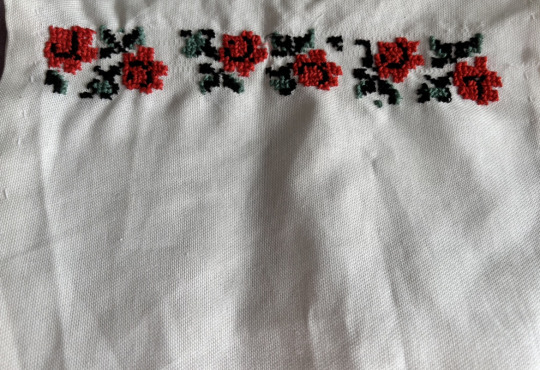
rushnyk in progress
39 notes
·
View notes
Note
Hello dear precious most talented and stunning Anna.
I hope you are well, and thriving as much as this life could allow.
Can I, a mere mortal, ask your highness to elaborate on your latest work of art? And to explain to me -a mere vincible creature- your splendid creation?
I shall wait for your answer, most patiently.
Thank you,
Someone who admires you so much
Mimi, first of all, you're NOT a "mere mortal" (even tho I know you were in the mood for such language, STILL I can't just pass by), you're amazing. And secondly, thank you a lot for asking, I'm so glad to share more about this art, truly. Thank you!
So, the original post here and for the reference I leave the art here too:

So, let's start with one of the most remarkable things here - the embroidered cloth in the background.
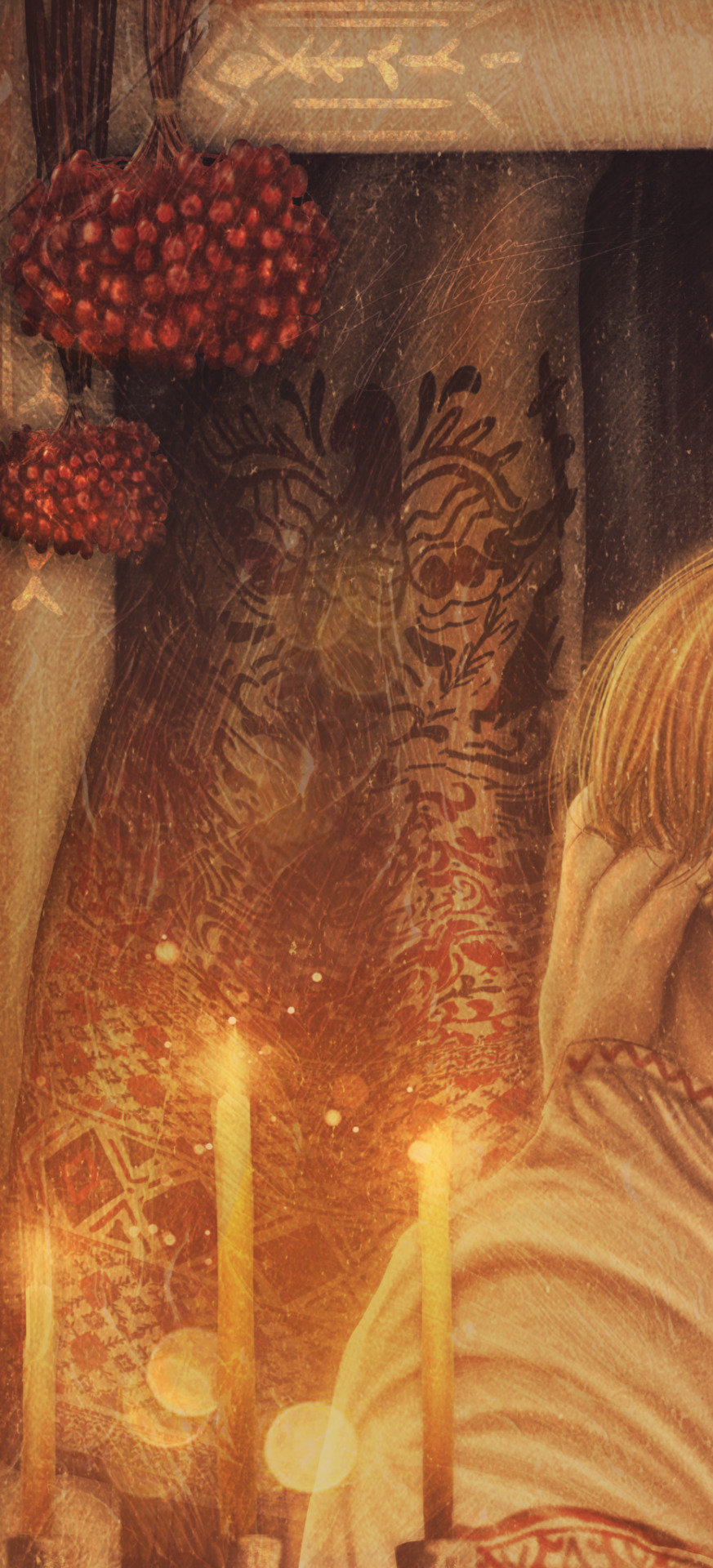

We call it "rushnyk", and it's both a decorative and ritual cloth. Rushnyk, as for rituals, is used for all the major events in life - birth, marriage and death, and we call it like the "line of life", since it has the long rectangular form, that reminds a path, and it leads a person through life. That's why each symbol, embroidered in rushnyk, aside from the specifics of each region that has its own unique pattern, has its meaning, the symbolism, the whole novel in threads, and that's why rushnyk is a part of the inheritance and each house, each family has its own story embroidered in cloth.
Let me tell you a bit of a wedding ritual with rushnyk: for the wedding and during the whole ceremony, more than 20 different rushnyks are used for different purposes (sometimes, it can be even more than 30!), but the most important ones are 4 of them:
- the one for the stepping on it - the most important one, it's a symbolic ritual of the newlyweds stepping on it, like a declaration that they will spend this life side by side together, to show the equal position and respect in marriage. This rushnyk is used only once, for one wedding, only for one newlyweds, and each detail is like the code for their happy future together. That's why this rushnyk is inherited ONLY, for the future generations new wedding rushnyk for stepping on it are embroidered from scratch. And then, this wedding rushnyk is used for the decorative purpose only (yeah... The one that is behind Annie and Armin is THIS ONE rushnyk :3 so you can decode some symbols on it too);
- the one for the icons (well, that is optional, if people are religious);
- the one for tying the newlyweds hands together - works +- the same as the wedding rings and the stepping ritual, to show that the newlyweds are connected, decided to spend this life together;
- the one for the korovai - the special ritual round bread, decorated with several symbols like moon, sun, animals, flowers etc (of course, each symbol has its meaning for the newlyweds and it varies by region). The bride and groom were given the korovai as a blessing before the wedding ceremony. The korovai was shared by all the wedding guests, and this was considered the culmination of the wedding.
But even in general, rushnyks were used like the typical decoration on the wall and could be done also just like for the decorations purpose only, framing paintings, icons, photos, the entrance, like the belief that each symbol on the rushnyk protects people in the photos and the house from the evil spirits and bad luck.
Well, for the whole jewelry thing I already explained here, on this post! For the embroidery of their shirt, it's all the same, but I just want to mention that here, both of them wear the ornaments from the West part of Ukraine, from the Lviv region.
Next, are these specific candle holders - it's a traditional Ukrainian candle holder for three candles, and it originated from West Ukraine, from Hutsuls - the one who lives in the Carpathians mountains, but it's widely used everywhere in Ukraine. The part of the Lviv region also has the Carpathians, so yep!
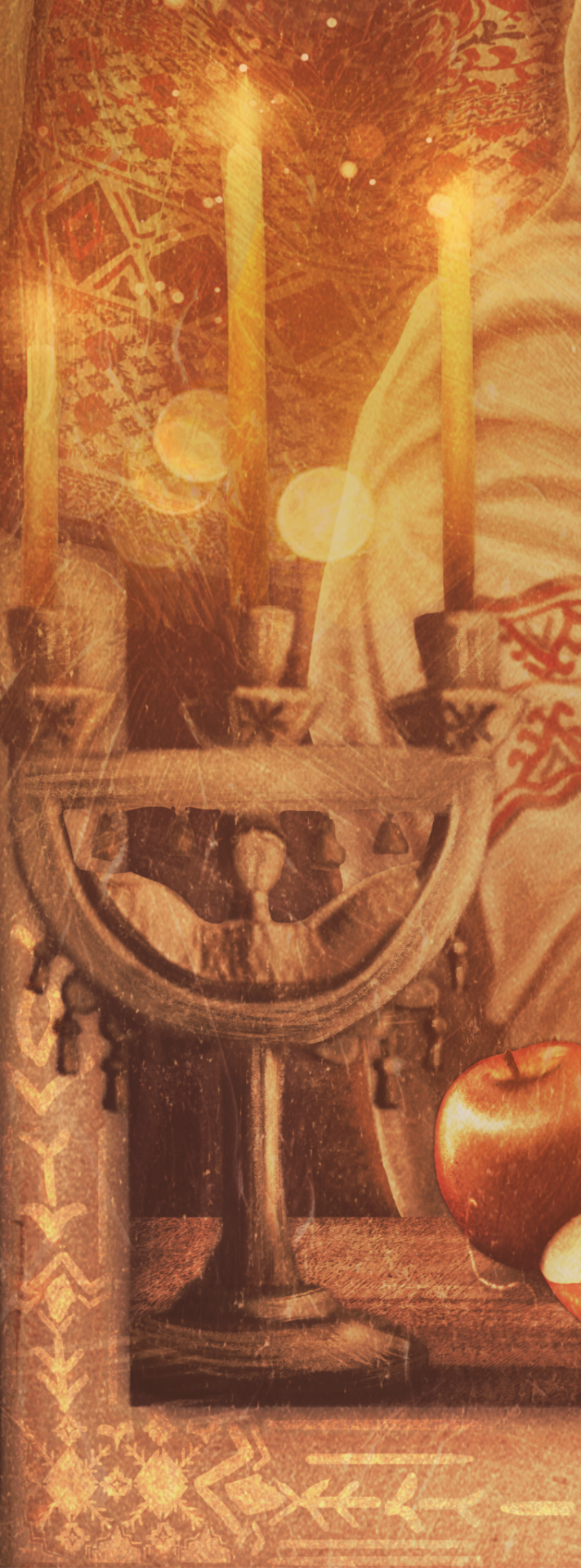
Next one, the bunches of guelder rose, that in Ukrainian is "kalyna".

Kalyna is, actually, an important symbol for Ukrainian culture in general, it's the symbol of love, happiness, respect, eternity, and also a bunch of kalyna is used in the wedding ritual as well, it was for decorations of vinok (ithe flowery crown with ribbons and others decorations), for korovai ornaments, for rushnyk embroidery etc, and also the bunch of kalyna - is a symbol of blood, shedded for the independence of Ukraine.
Also, I need to note another thing, I already mentioned in this post that Ukrainian culture is about layers.
Actually, what we see at Annie and Armin is not only the open shirts but more like the last layer of the clothes, it's nothing but the naked body under it.
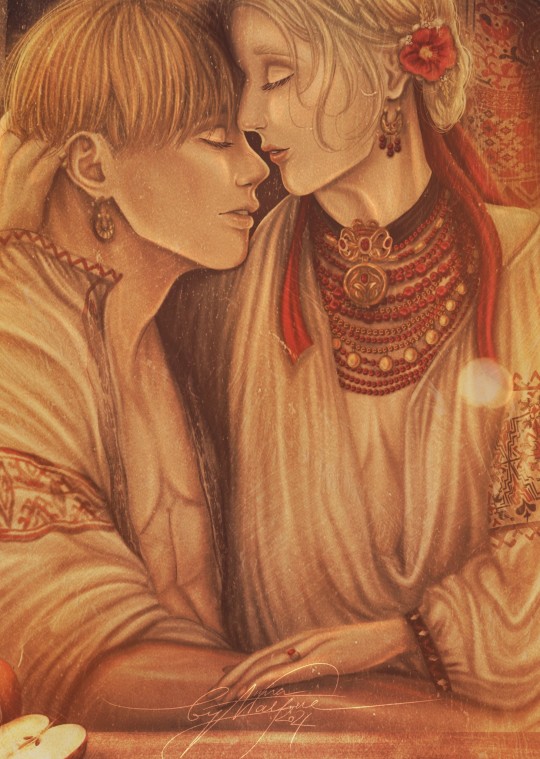
So, based on everything I just said, the whole composition, the lightning, their pose - everything should speak as a frozen moment of their intimacy, sensuality, of trust and respect, and all the symbols and some small details work together to show it, to straighten the whole vibe of their first married night or something like this. Even their opened shirts are not because for fanservice (only) and because I'm down bad for these two, but rather to show their closeness, their trust and admiration, their unity and their vulnerability they show each other with an open heart.
So well, that's it!
Thank you so much for asking, and I enjoyed writing all of it. I tried not to make it boring, so I hope it was entertaining.
#aruani#armin arlert#annie leonhardt#annie leonhart#answered ask#ask#ukrainian traditions#ukrainian culture#ukrainian art#ukraine#украрт#український tumblr#my art#digitalart#illustration
19 notes
·
View notes
Photo


Rushnyks from Volyn, 1920s
282 notes
·
View notes
Text
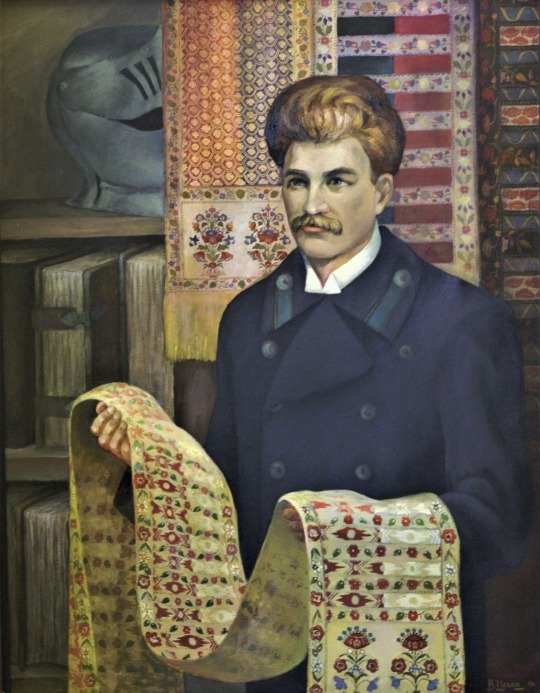

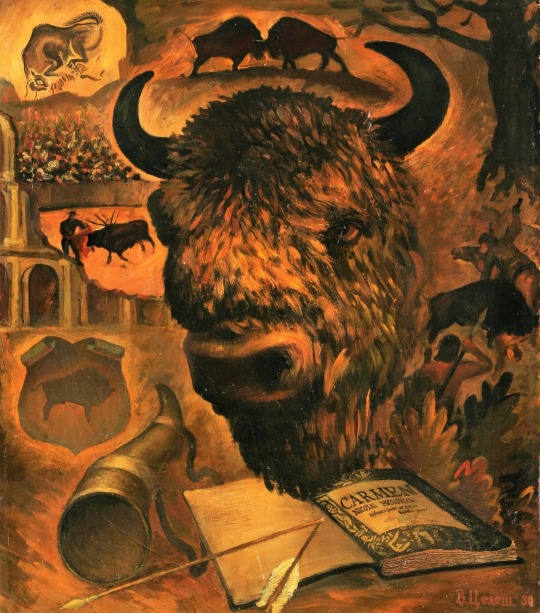
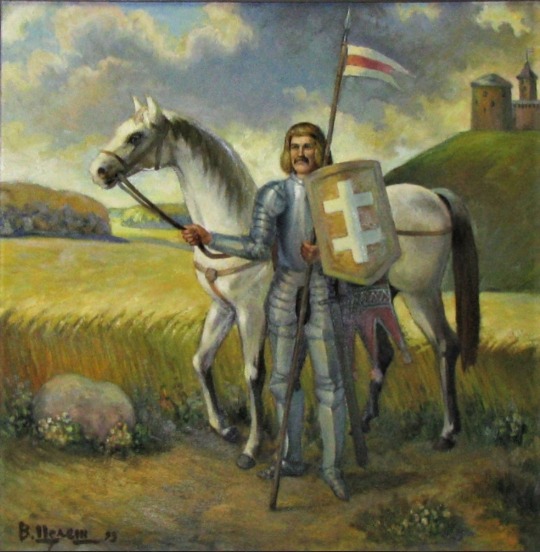
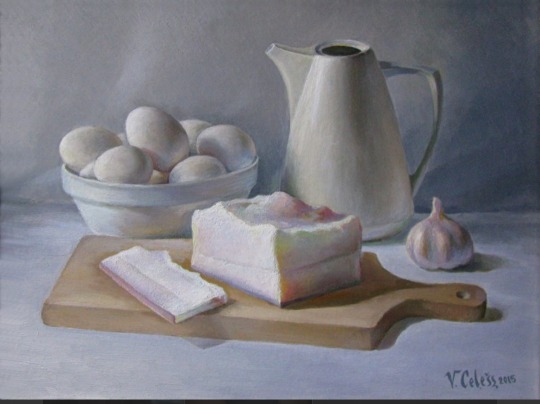
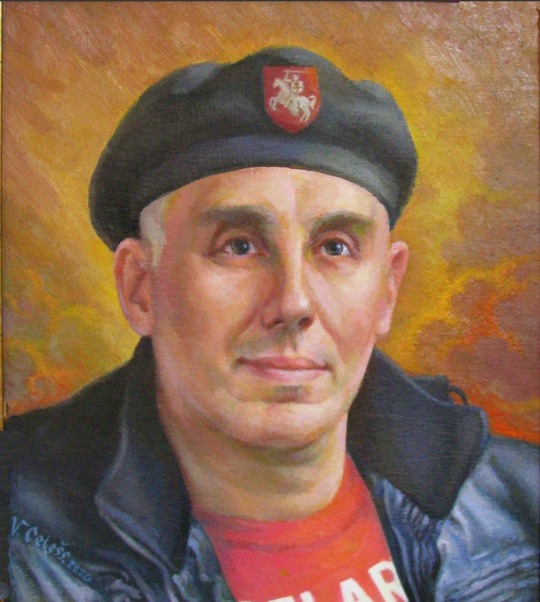
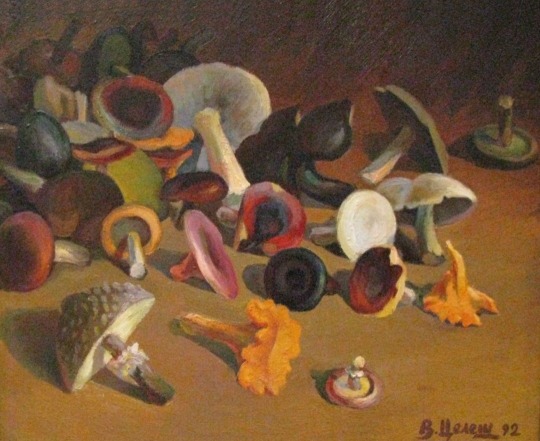
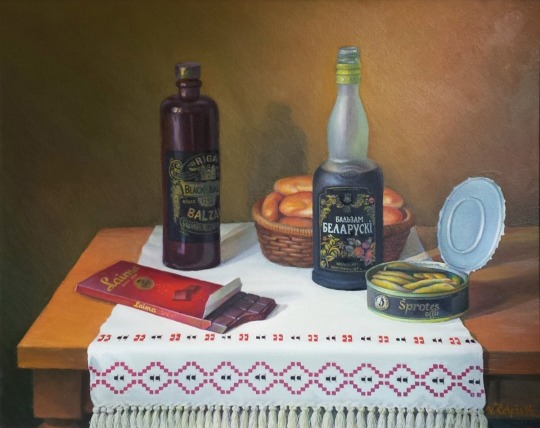

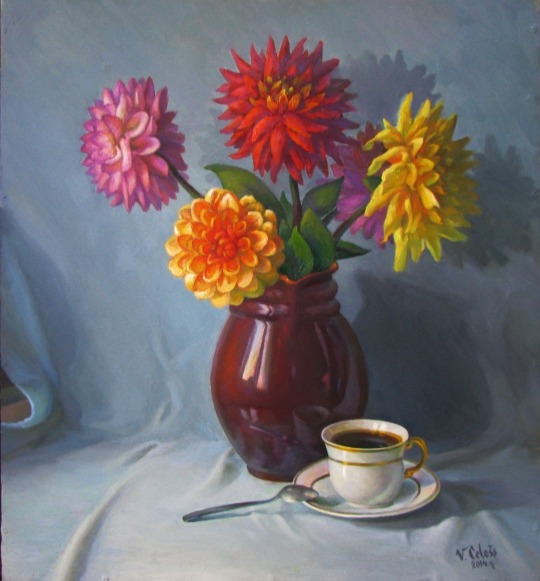
Вячка Целеш (Vjačeslavs Ćelešs)
1. Заміж персідскага ўзору... Максім Багдановіч, 1991 - Instead of the Persian pattern... Poem by Makśim Bahdanovič, 1991
2. У лекарскіх навуках, доктар Францішак Скаріна, 1990 - In medical sciences, Dr. Franćišak Skaryna, 1990
3. Прысвячэнне зубру 1980 - Dedication to the zubr, 1980
4. Князь Вячка 1993 - The Duke Vjačka, 1993
5. Нацюрморт з салам, 2015 - Still life with lard, 2015
6. Партрэт сына, 2020 - Portrait of a son, 2020
7. Лясная палітра, 1992 - Forest palette, 1992
8. Інтэграцыя. Нацюрморт з беларускім бальзамам, 2014 - Integration. Still life with Belaruthian balsam.
9. Нацюрморт з ручніком, 1993 - Still life with ručńik [rushnyk in Ukrainian]
10. Нацюрморт з кубачкам кавы, 2014 - Still life with a cup of coffee
8 notes
·
View notes
Text
Bread & Salt
Today is the 32nd anniversary of Ukrainian Independence. It is also day 546 since Russia began its war in Ukraine. On August 24, 1991, Ukraine regained its independence from the Soviet Union. The day is a powerful reminder of Ukrainian democracy and self-rule, and we celebrate the courage and bravery of the Ukrainian people.
Last week, at the Parliament of the World's Religions, I participated in a ritual performance that featured goddesses from around the world offering messages to the audience, each one wearing a beautiful mask hand-made by artist Lauren Raine.
Each of us was tasked with writing something that spoke to the challenges we see around the planet: pollution, starvation, inequality, war.
It was my honor to wear a mask of the goddess Lada, as well as my embroidered folk costume from Ukraine. I carried bread and salt on top of an embroidered rushnyk, in a traditional greeting.
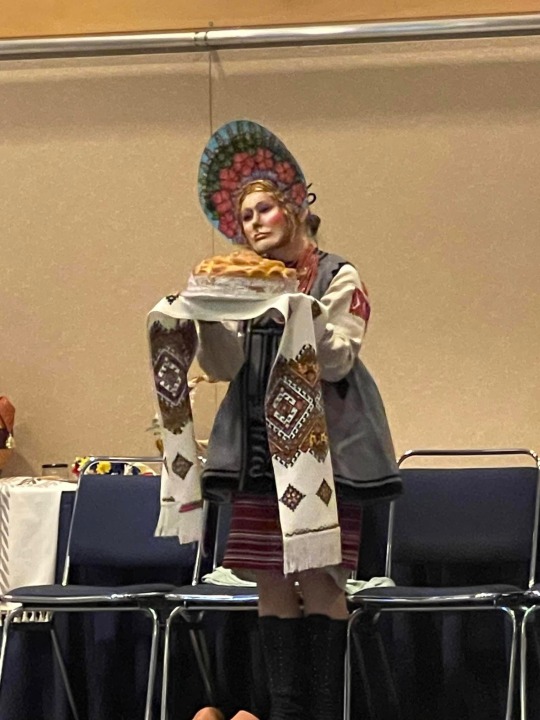
In Ukraine, bread and salt are offered as a sacred tradition, incorporated into celebrations that include weddings, funerals, and holidays. I asked my aunt Katia Hrynewycz, who is a baker and the owner of Chicago Cake Art, to bake a special circular bread (korovai) that could be used in the performance and then shared with the audience.
There are so many ancient ideas and stories tied to bread in Ukrainian culture: The grain is symbolic of prosperity and fertility, the circle a symbol of eternity and community, the salt exemplifies wealth and also protection. The bread may be adorned with trees, braids, birds, and more, depending on the occasion. As is the case with Ukrainian pysanky and embroidery, every object that adorns Ukrainian bread is symbolic of a blessing or intention for the people who will receive it.
On Ukrainian Independence Day, I wanted to share Lada's message:
Lada's Message
We come to the threshold with bread and salt,
our greeting since before maps and borders.
We say Vitayemo to welcome guests
and offer communion with treasures of
the rich black soil we call chornozem:
grains we grind to bake this holiness,
salt precious and pulled from the ground,
to preserve, to give life flavor.
Everything we have loved and grown
and lost and buried, is in that black earth.
When we say Vitayemo, we are inviting you
into our home and into our story,
with wheat grown from the heart of our Mother,
and salt from her seas and stones,
We are sharing a part of ourselves,
a part of our ancestors, our roots deep in that fertile soil.
When we say Vitayemo, we are telling you that we see you.
and we will remember the way you receive our gifts:
Will you show gratitude?
Will you take nothing more than what was offered?
Will you share something of yourself?
Will you leave the space better than when you entered?
We are living the legacy of betrayal—
what happens to bread and salt
when all is blood and butchering?
When we say Vitayemo, we enter into relationship—
I am saying that I am open to you.
Can you feel the opening of my heart?
Do you see the ripping open of my heart?
Will you watch the bleeding of all who are held in my heart?
How will you cross the threshold?
~Valya Dudycz Lupescu
Слава Україні! Героям слава!
#ukraine#Слава Україні#The Parliament of the World's Religions#Goddess Speaks#vitayemo#bread and salt#hospitality#lada#goddess#slavic mythology#ukrainian mythology#ukraine's independence day#welcome
13 notes
·
View notes
Text
The talismanic properties of the rushnyk are most often reinforced by woven or embroidered motifs at each end; these are nearly always identical. There is no top or bottom of a rushnyk [as they] are intended to be hung around an icon or frame, tied around a cross, wrapped over the shoulder or around the waist, or held in outstretched hands from the usually unadorned center, with the two side flaps hanging downwards towards the earth. The decorated ends drape in parallel. The woven or embroidered symbols thus appear in duplicate, side by side.

From "Ukrainian Rushnyky: Binding Amulets and Magical Talismans in the Modern Period", published in the Folklorica Journal, 2014; Franklin Sciacca (My Ko-Fi Here)
#Ukrainian Rushnyky: Binding Amulets and Magical Talismans in the Modern Period#Folklorica#Franklin Sciacca#Slavic Folk Tradition#Quote
4 notes
·
View notes